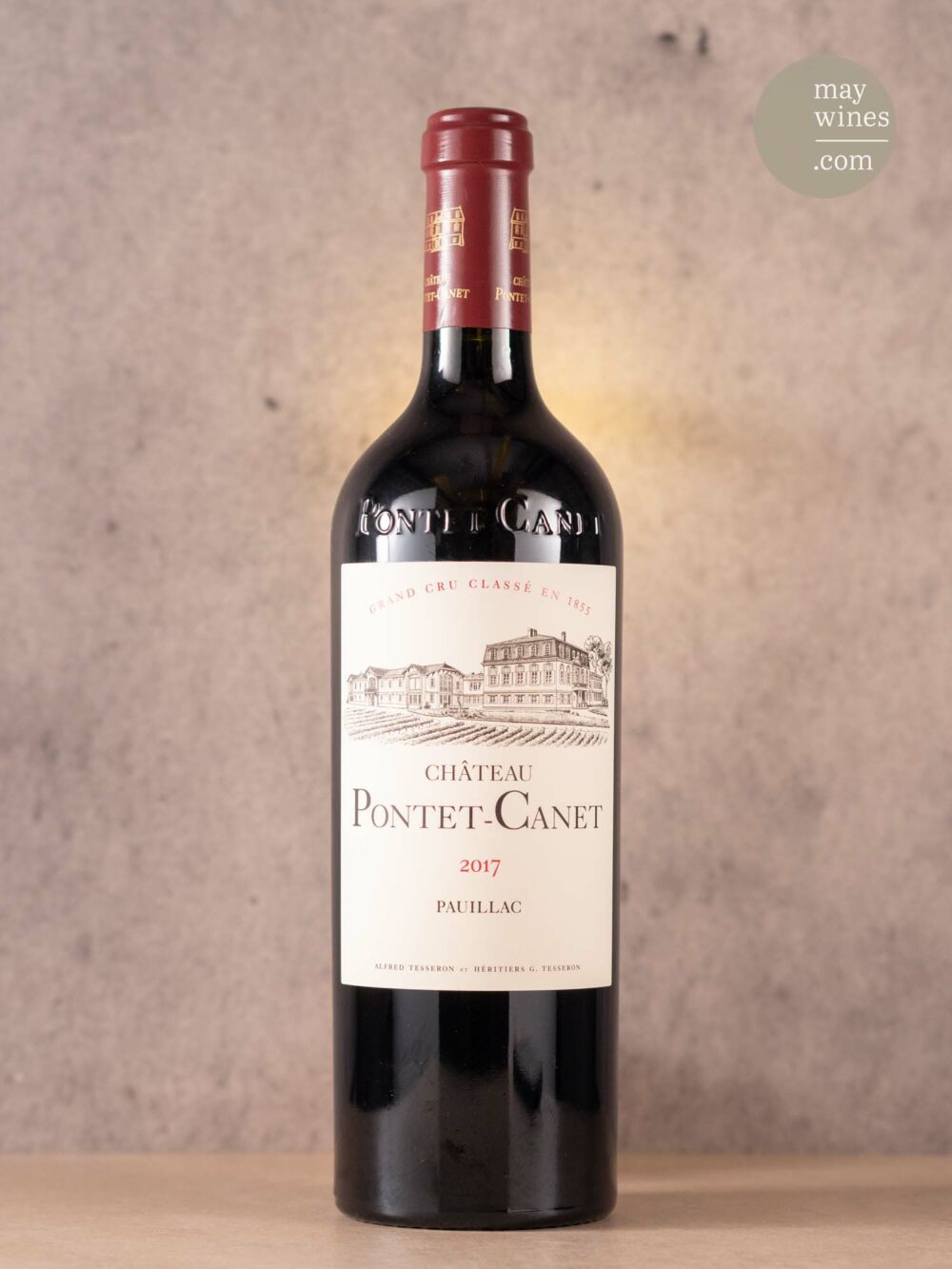Château Pontet-Canet
Das sind die mit den Pferden und Pflügen, genau! In Sachen vorbildlicher, schonender Landbearbeitung ist das 5ème Cru in Pauillac ein echter Vorreiter in Bordeaux. Seit 2010 ist Pontet-Canet offiziell biodynamisch zertifiziert. Besitzverhältnisse sind bis ins frühe 14. Jahrhundert nachweisbar: Von englischen Besitzern ging das Château nach der (englischen) Niederlage im Hundertjährigen Krieg an französische Besitzer. 1975 übernahm Familie Tesseron, der es bis heute gehört. 81 von 120 Hektar sind mit Reben bestockt, und das dicht: 9.000 Stöcke pro Hektar. Aus 60 % Cabernet Sauvignon, 33 % Merlot, Cabernet Franc und Petit Verdot wird wieder sehr guter, klassischer Pauillac gekeltert. Wieder? Wie so viele Bordelaiser Châteaux befand sich auch Pontet-Canet in einer Krise. 1990 kam das Haus durch die Hilfe eines der bedeutendsten Önologen, Émile Peynaud, wieder zu Renommee. Auch Michel Rolland hat zweifellos seinen Anteil am Erfolg. Und vielleicht wirkt sich ja auch die Grundnachbarschaft zu Mouton-Rothschild energetisch positiv aus ☺? Aber nicht alle älteren Jahrgänge waren enttäuschend. Wenn Sie einen 1961er oder 1970er Pontet-Canet finden, werden Sie viel Freude haben.
Alfred und Melanie Tesseron kauften 2016 übrigens das Napa Estate Villa Sorriso des US Schauspielers Robin Williams.
All wines from Château Pontet-Canet
All vintages of Château Pontet-Canet
Bordeaux
„Am Wasser liegend“ fiel den Römern zum heutigen Bordeaux ein und nannten das Gebiet deshalb „Aquitanien“. Seine Haupt- und Hafenstadt trägt den gleichen Namen wie das 100.000 Hektar große Weinbaugebiet von Weltruhm: Bordeaux oder auf französisch Bordelais. Vor und entlang der Gironde, welcher sich aus den Flüssen Dordogne und Garonne speist, liegen die weltbekannten Weinbaugebiete Médoc, Haut-Médoc, Graves und rechtsufrig die Orte St. Emilion und Pomerol. Unser Herz schlägt seit vielen Jahren für die feinen Weine des Bordelais, wir sammeln schon seit 20 Jahren diese Weine, kaufen regelmäßig Liebhaber-Keller auf und konzentrieren uns auf die für uns großen Jahre (unter anderem 1982, 1985, 1986, 1989, 1990, 1996, 1998, 2000, 2005, 2009, 2010 und einige mehr) und die Top Winzer. Weine, die uns nicht schmecken, bieten wir auch nicht an.
Denkt man als Weinliebhaber an Bordeaux, fällt einem unweigerlich Cabernet Sauvignon ein. Warum gelingt die Sorte dort so besonders gut? Das Klima auf der Halbinsel links der Gironde, Médoc, ist das mildeste in ganz Bordeaux und genau hier gedeihen Cabernet Sauvignon-basierte Cuvées von Weltrang. Die Sorte braucht genau diese Bedingungen, um es mit einiger Regelmäßigkeit zur Traubenreife zu schaffen. Die Kiefernwälder schützen die Weinberge gegen die starken Atlantikwinde und mäßigen zudem die Sommertemperaturen. Da es, so nahe am Meer viel regnet, baut das typische Château zur Risikominderung mindestens drei Rebsorten an: zu Cabernet Sauvignon gesellen sich üblicherweise Merlot und Cabernet Franc, gelegentlich auch die später reifenden Sorten Petit Verdot und Malbec. Voilà! Je nach Uferseite dominieren Cabernet Sauvignon die Cuvée (linkes Ufer) bzw. Merlot (rechtes Ufer). Freilich gibt es vereinzelt Ausnahmen, aber das wäre die grobe Unterscheidung der zwei berühmtesten Ufer der Weinwelt.
All wines from Left Bank
Pauillac
Ihr Puls steigt, wenn Sie schwarze Johannisbeeren, Zedernholz, Zigarrenkiste und feuchter Waldboden hören? Dann ist Ihr Kenner-Gaumen vermutlich auf Pauillac eingetrunken. Willkommen im Cabernet Sauvignon Paradies! Der britische Weinkritiker Hugh Johnson sagte: „If one had to single out one commune of Bordeaux to head the list, there would be no argument. It would be Pauillac.” Gleich drei der fünf weltberühmten Premiers Crus beherbergt die 1.200 Hektar große AC: Lafite, Latour und Mouton-Rothschild. Lafite und Mouton teilen sich übrigens Weingärten am höchsten Plateau von Le Pouyalet, ganze 30 Meter hoch. Pauillac ist aber auch die Herkunft einer Menge weiterer interessanter Weingüter: 2ème crus Pichon-Comtesse, Pichon-Baron, 4ème cru Duhart-Milon, 5ème crus Pontet-Canet und Lynch-Bages, um nur einige zu nennen. Cabernet Sauvignon dominiert die hocheleganten Cuvées. Tiefgründiger Kies lässt Wasser auf der fast unmerklich welligen Topographie perfekt drainagieren, und das lässt die Rebsorte zu Weltweinen gedeihen.
All wines from Pauillac


